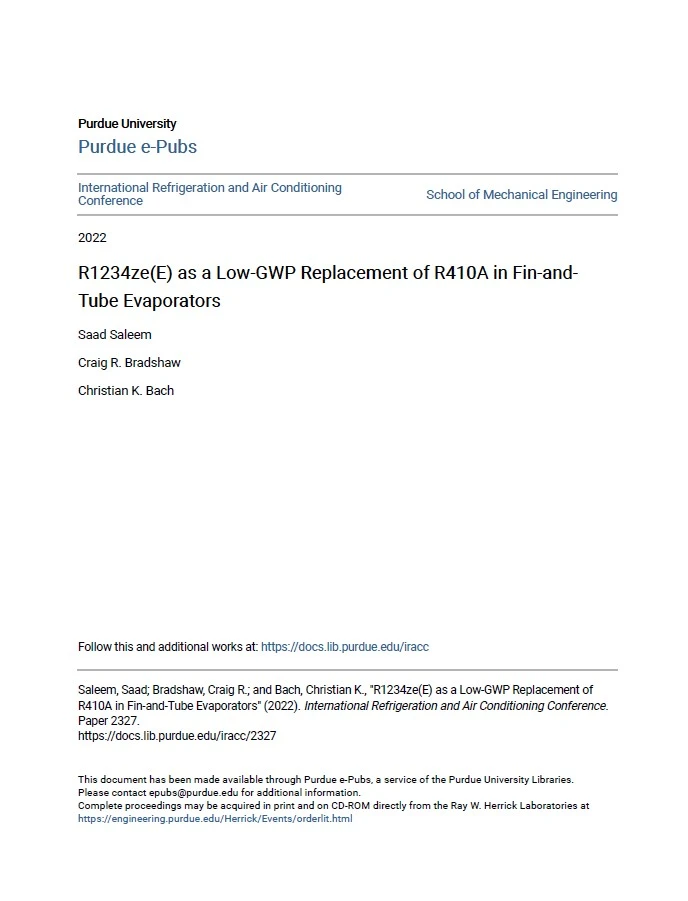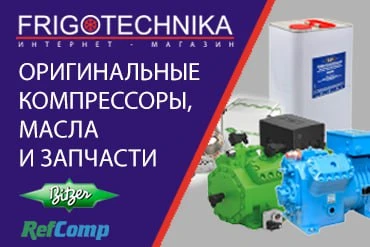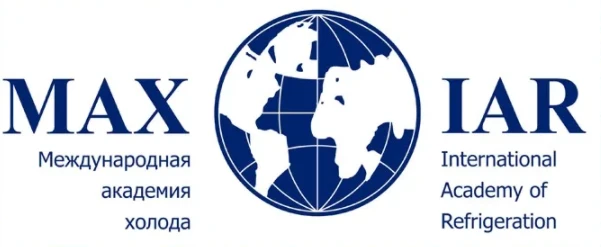Автор: Saleem S., Bradshaw C., Bach C.
Год: 2022Язык: АнглийскийТип: Статьи
Regulatory requirements throughout the world are compelling air conditioning (AC) and heat pump (HP) manufacturers to switch from halogenated refrigerants, like R410A, to more environmentally friendly alternatives with reduced global warming potential (GWP). This study explores the ramifications of using the ultra-low-GWP refrigerant R1234ze(E) in a fin-and-tube evaporator coil designed for R410A. A total of 36 tests were carried out using a high-fidelity experimental facility for both refrigerants to validate a segment-by-segment heat exchanger model. R410A had a mean absolute percent error (MAPE) of 0.9% between experimental and simulated capacity, whereas R1234ze had an MAPE of 1.4%. Simulations with R1234ze(E) where then carried out, investigating the effects of modified fin density and refrigerant circuitry. Increasing the fin density of the baseline evaporator from 15 to 20 fins per inch (FPI) led to an increase in capacity of 4.9%, and a reduction in refrigerant side pressure drop of 4.5%. When comparing the refrigerant circuitry optimization to the baseline, a maximum increase in capacity of 5.6% was observed, but at the cost of 7.5 times higher pressure drop. An alternate heat exchanger circuitry resulted in a 38% reduction in pressure drop and a 2.5% reduction in capacity. The results showed that the chosen two heat exchanger geometrical parameters had a significant impact on capacity and refrigerant side pressure drop for R1234ze(E), indicating room for improvement in coil performance with low-GWP refrigerants by further adjusting heat exchanger geometry.
















Комментарии
Войдите или зарегистрируйтесь, чтобы оставить комментарий